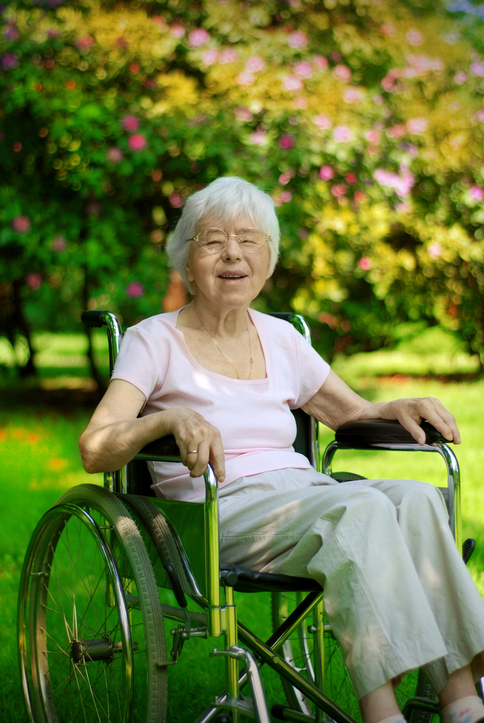Every July, the spirit of creativity and inclusivity comes alive with National Wheelchair Beautification Month. This unique celebration encourages wheelchair users to personalize and decorate their wheelchairs, transforming these essential mobility devices into vibrant expressions of individuality and pride. While this initiative is valuable for all wheelchair users, it holds particular significance for elderly individuals, enhancing not just their mobility, but their sense of identity and dignity.
The Importance of Accessibility and Personalization
Wheelchairs are more than just a means of transport; they are an extension of the user’s body, providing freedom and independence. For elderly individuals, who often face multiple challenges related to mobility and health, a wheelchair is crucial for maintaining their autonomy. However, the utilitarian nature of standard wheelchairs can sometimes contribute to a sense of depersonalization and invisibility.
National Wheelchair Beautification Month addresses this by promoting the decoration and customization of wheelchairs. By transforming a wheelchair into a colorful and personalized piece of equipment, elders can express their personalities, interests, and creativity. This not only enhances their self-esteem but also helps break down the social barriers and stigmas associated with disability and aging.
Enhancing Mental and Emotional Well-being
Decorating a wheelchair can have profound effects on an elder’s mental and emotional well-being. Engaging in creative activities has been shown to reduce stress, improve mood, and enhance overall cognitive function. For elderly individuals, who might struggle with feelings of isolation and depression, especially if they reside in care facilities or live alone, this creative outlet can be incredibly therapeutic.
Participating in National Wheelchair Beautification Month provides elders with an opportunity to engage in a communal activity that fosters social interaction. Whether it’s a group project in a nursing home or a family activity at home, decorating a wheelchair can create moments of joy and connection, which are crucial for emotional health.
Encouraging Social Inclusion and Visibility
Wheelchair users, particularly elders, often face social invisibility. Society tends to overlook the individuality of people who use mobility aids, viewing them through the lens of their disability rather than as unique individuals. By customizing their wheelchairs, elders can challenge these perceptions and assert their presence in a visually compelling way.
A beautifully decorated wheelchair becomes a conversation starter, inviting curiosity and dialogue. It encourages others to see the person first, rather than just the wheelchair. This shift in perception is essential for fostering a more inclusive society where elders and individuals with disabilities are recognized and valued for their full humanity.
Practical Tips for Wheelchair Beautification
1. Safety First: Ensure that any decorations do not interfere with the functionality and safety of the wheelchair. Avoid placing items near the wheels or moving parts.
2. Personalization: Use decorations that reflect the user’s interests and personality. This could include favorite colors, hobbies, or even photos.
3. Temporary Decorations: Consider using temporary decorations like removable stickers, washable paints, and fabric covers. This allows for seasonal changes and fresh designs without permanent alteration.
4. Craft Materials: Utilize a variety of craft materials such as ribbons, fabric, beads, and lights. These can be creatively combined to achieve stunning results.
5. Collaborative Projects: Engage family, friends, and community members in the decoration process. This not only makes the activity more enjoyable but also strengthens social bonds.
Community Involvement and Support
National Wheelchair Beautification Month also presents an excellent opportunity for communities to come together in support of their elderly members. Local organizations, schools, and businesses can organize events and workshops focused on wheelchair decoration, providing materials and assistance to those who need it.
Care facilities and senior centers can play a pivotal role by incorporating wheelchair beautification into their activity schedules. These events can culminate in showcases or parades, celebrating the creativity and spirit of the participants. Such community involvement not only uplifts the elderly but also educates the broader public about the importance of accessibility and inclusion.
The Broader Impact
Beyond the immediate benefits to the participants, National Wheelchair Beautification Month serves a broader purpose. It raises awareness about the importance of accessibility and the need for inclusive environments that cater to the diverse needs of all individuals, especially the elderly. It highlights the intersection of aging and disability, advocating for more compassionate and understanding communities.
In conclusion, National Wheelchair Beautification Month is a celebration of creativity, individuality, and inclusivity. For elderly wheelchair users, it is a powerful reminder that accessibility goes beyond physical mobility; it encompasses the right to express oneself and to be seen and appreciated as a unique individual. By supporting and participating in this initiative, we can help create a society where every elder is recognized, valued, and celebrated.
